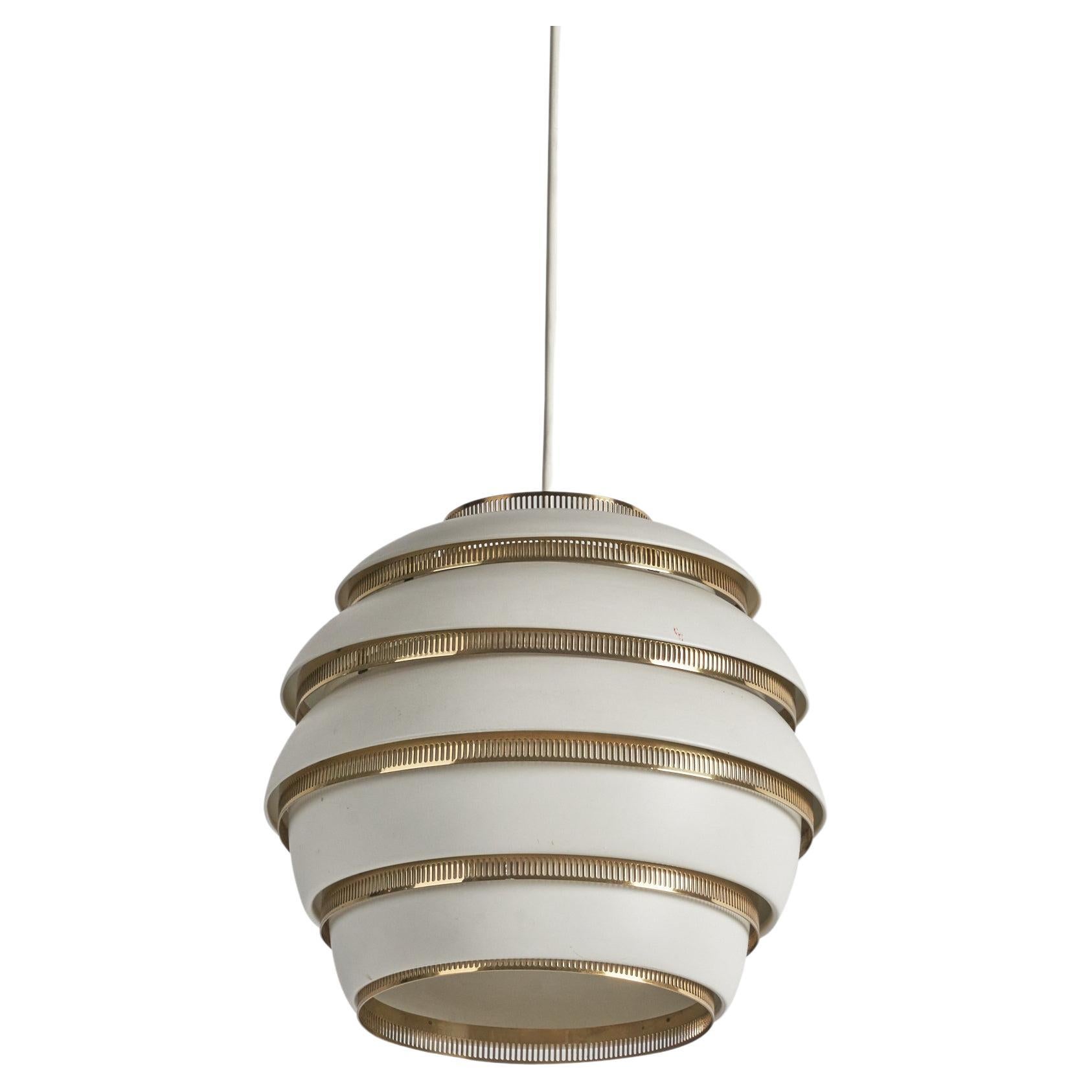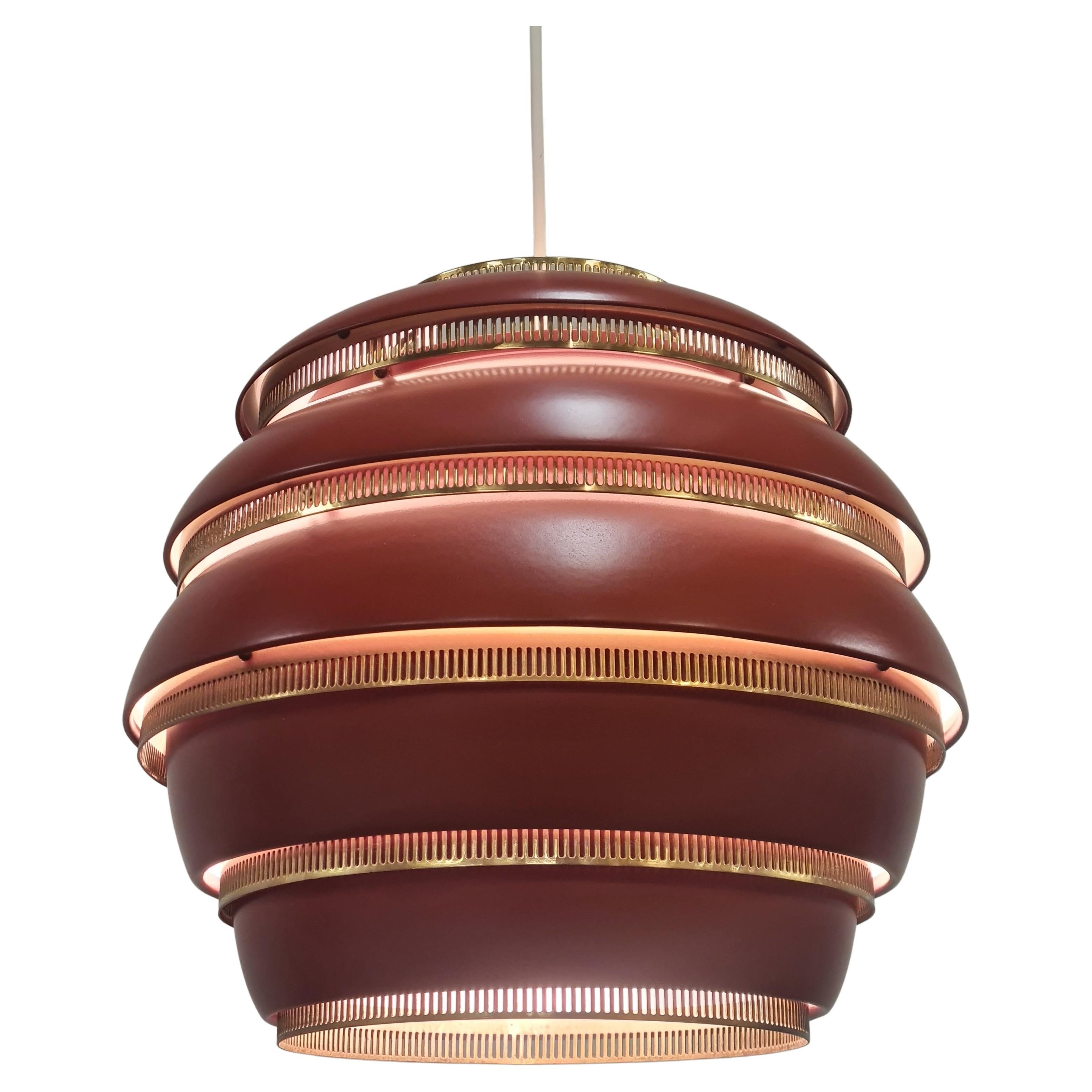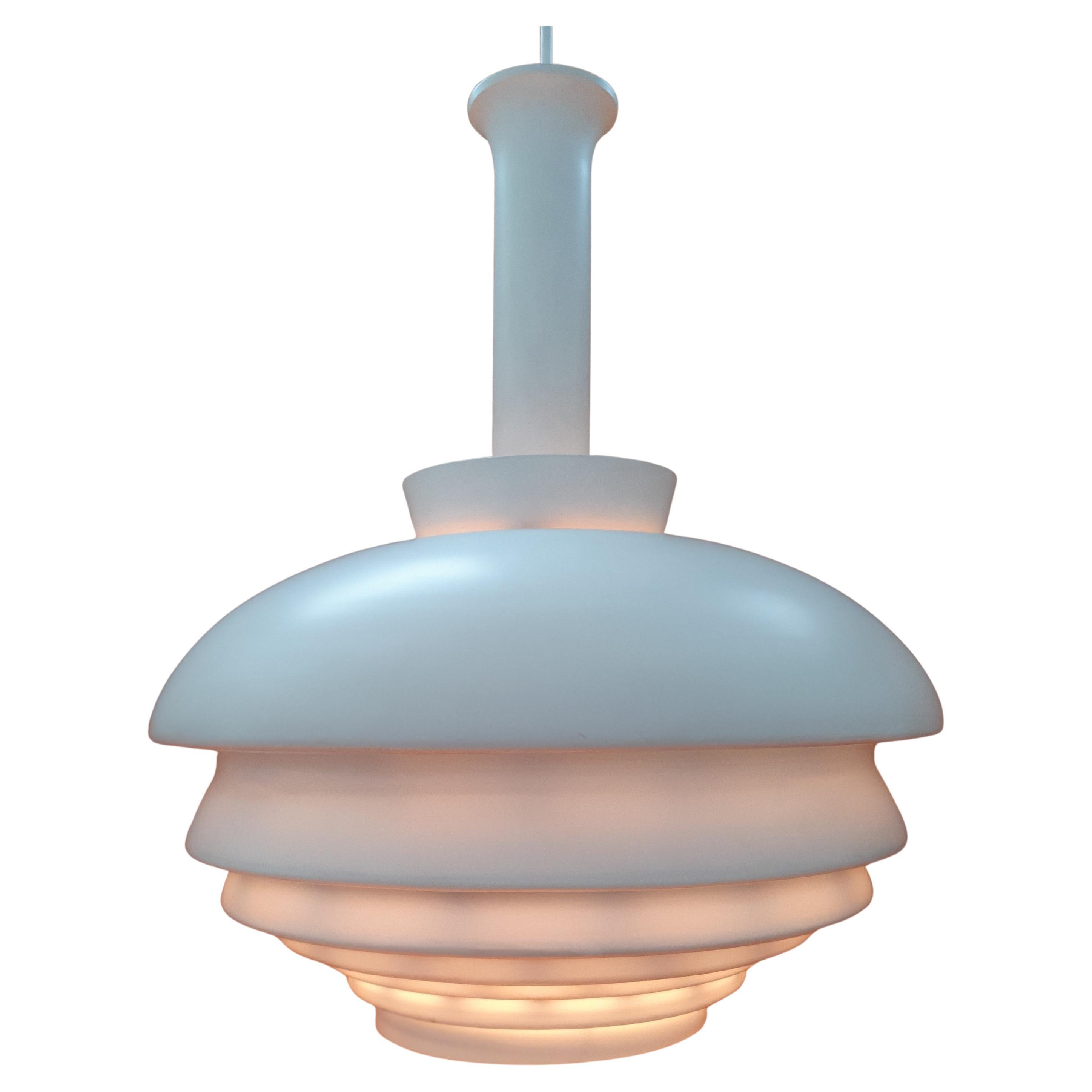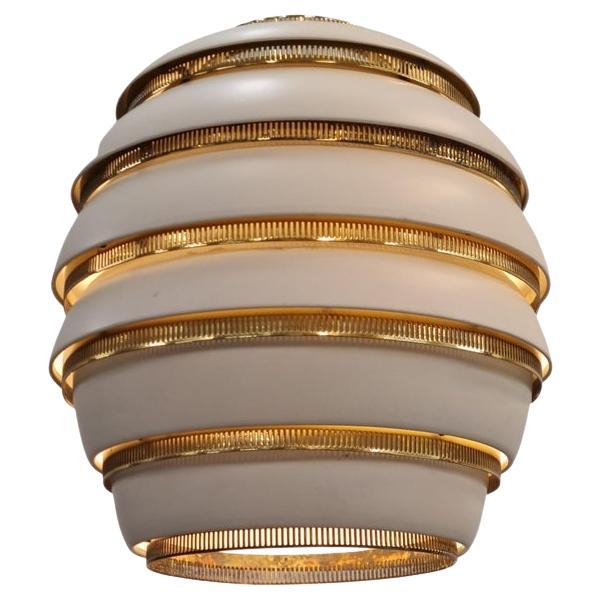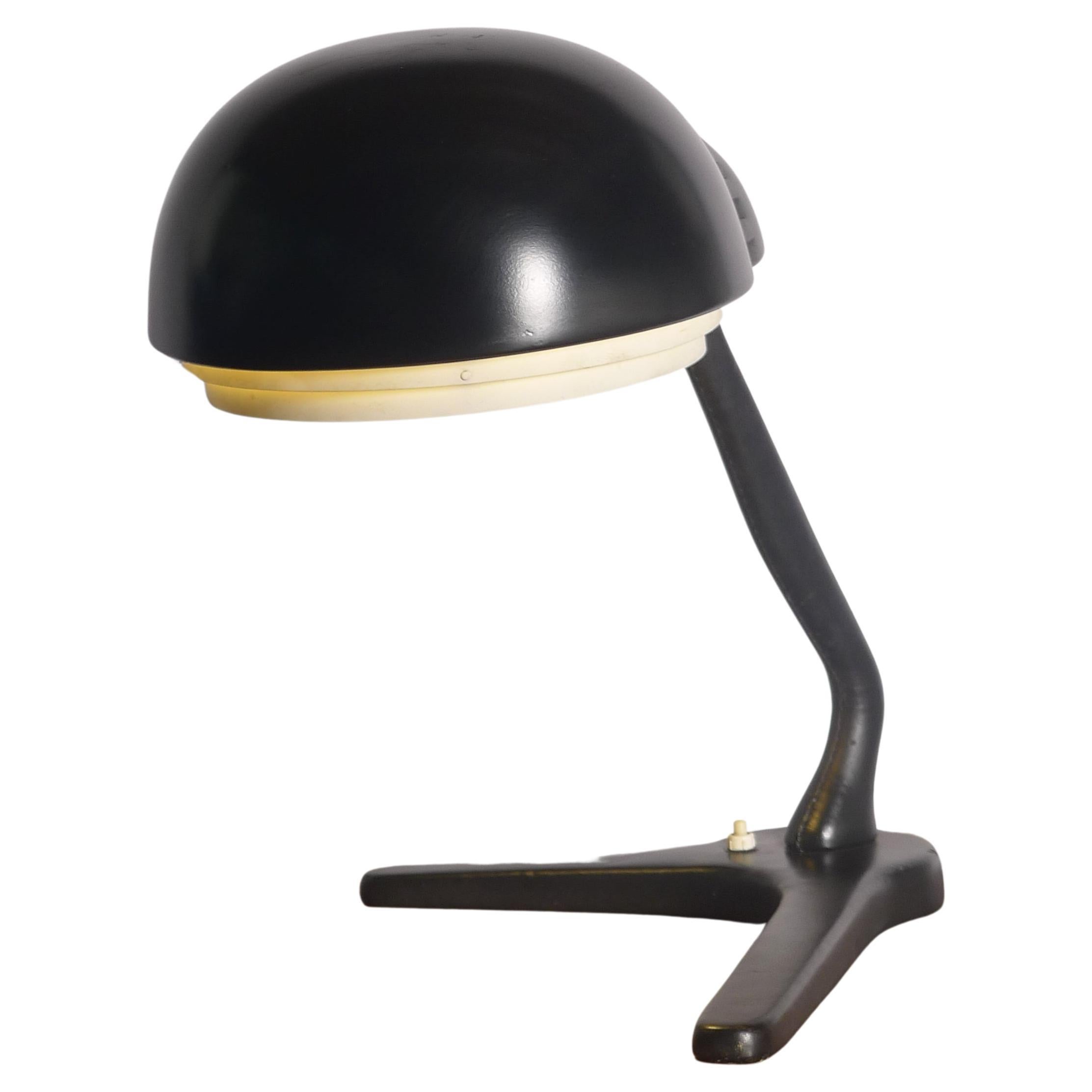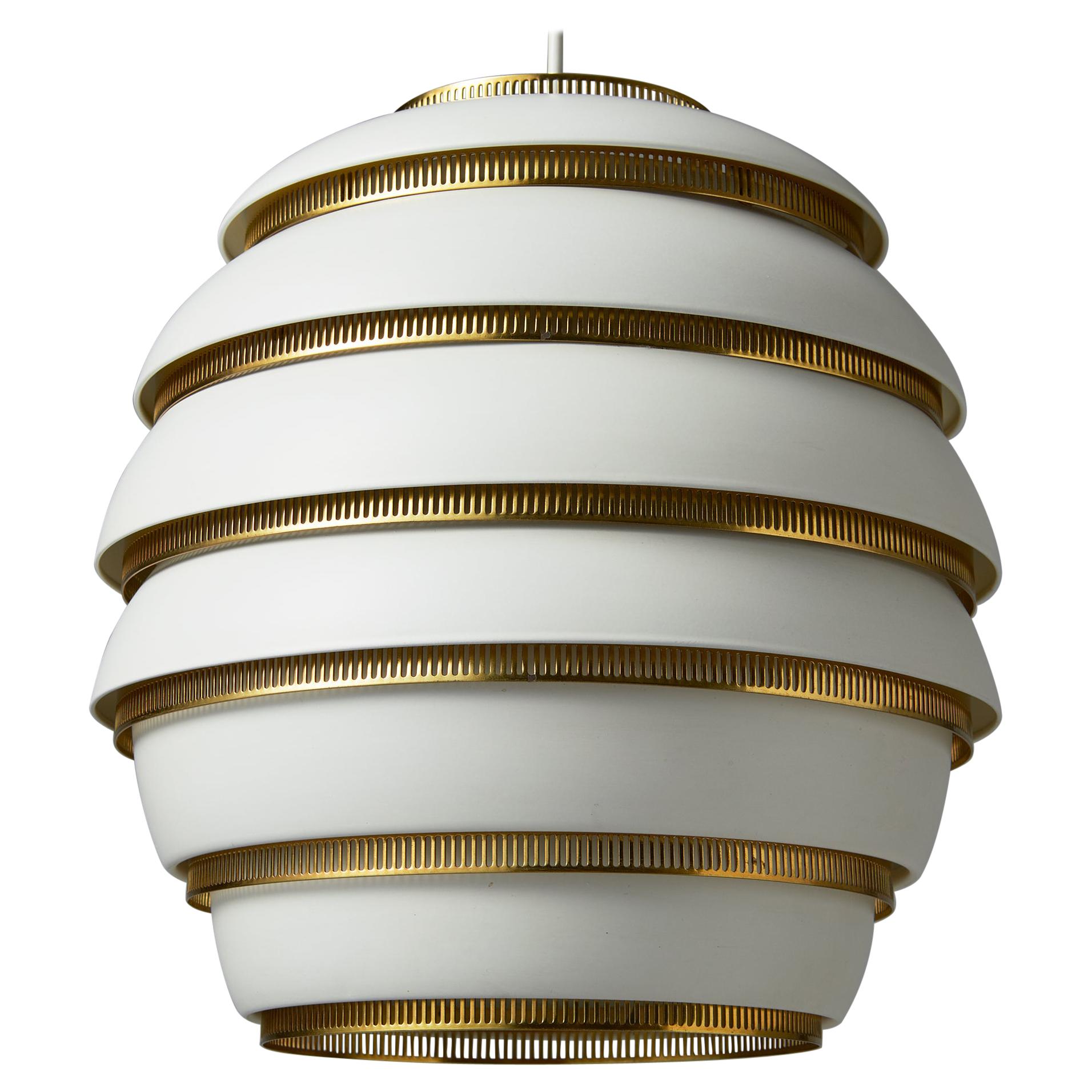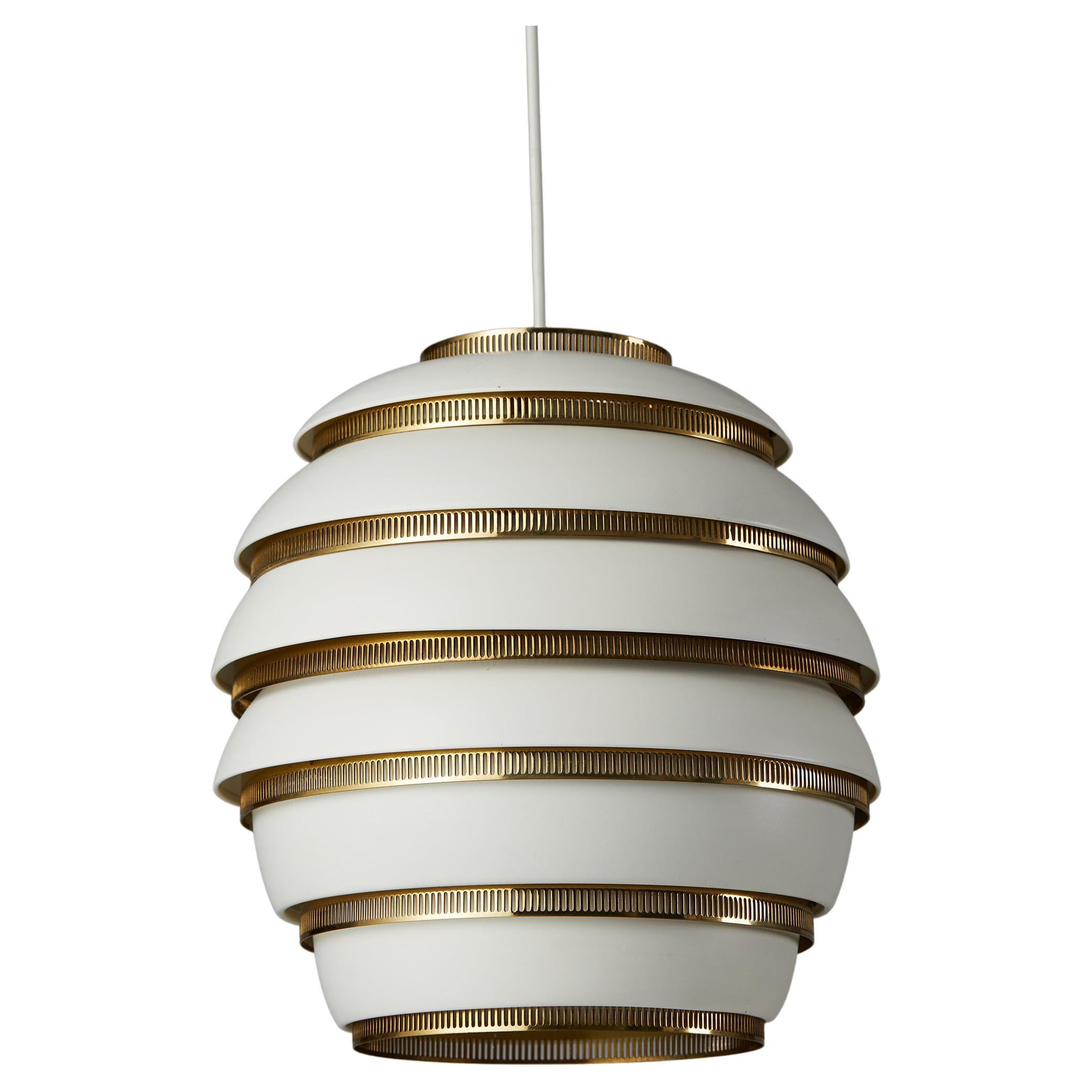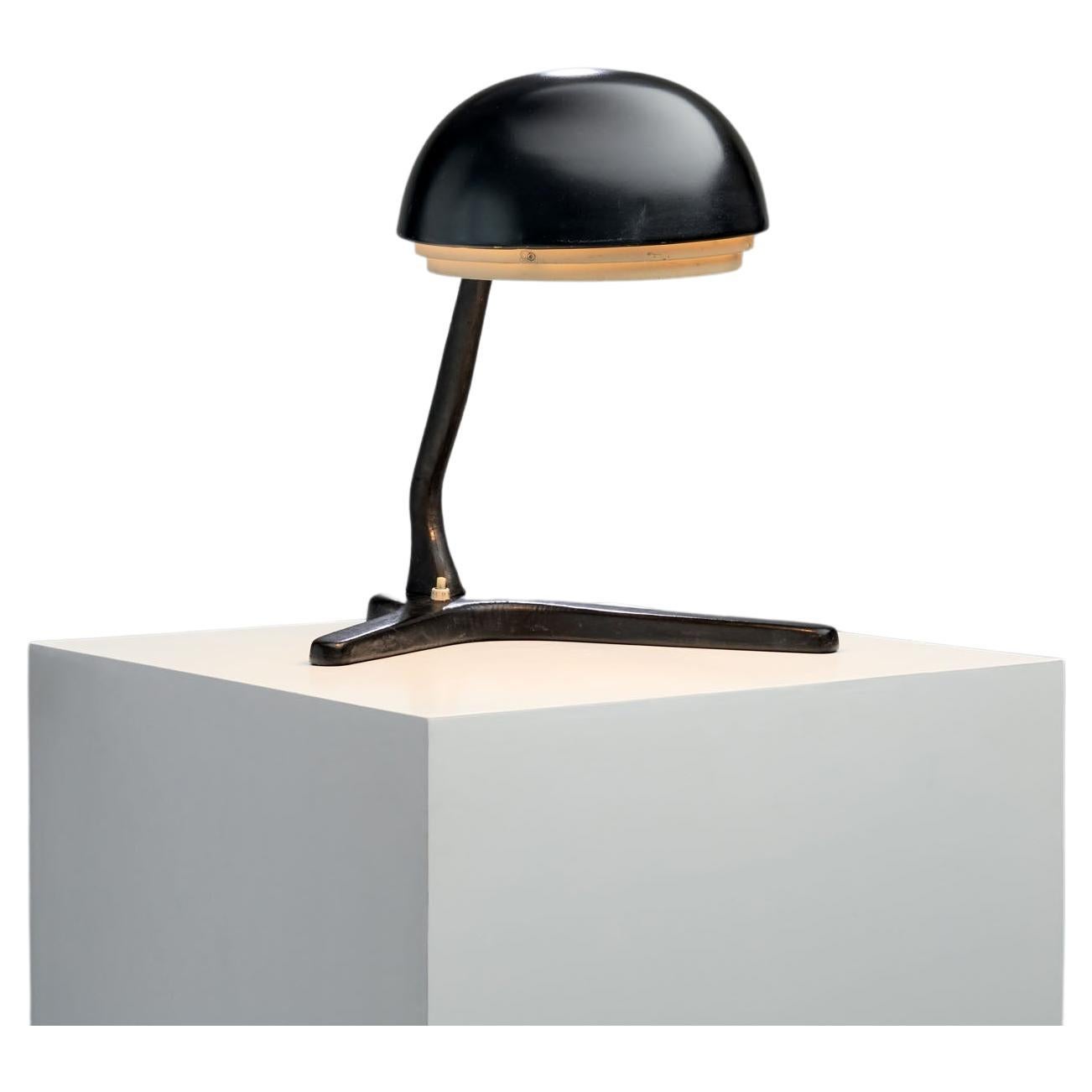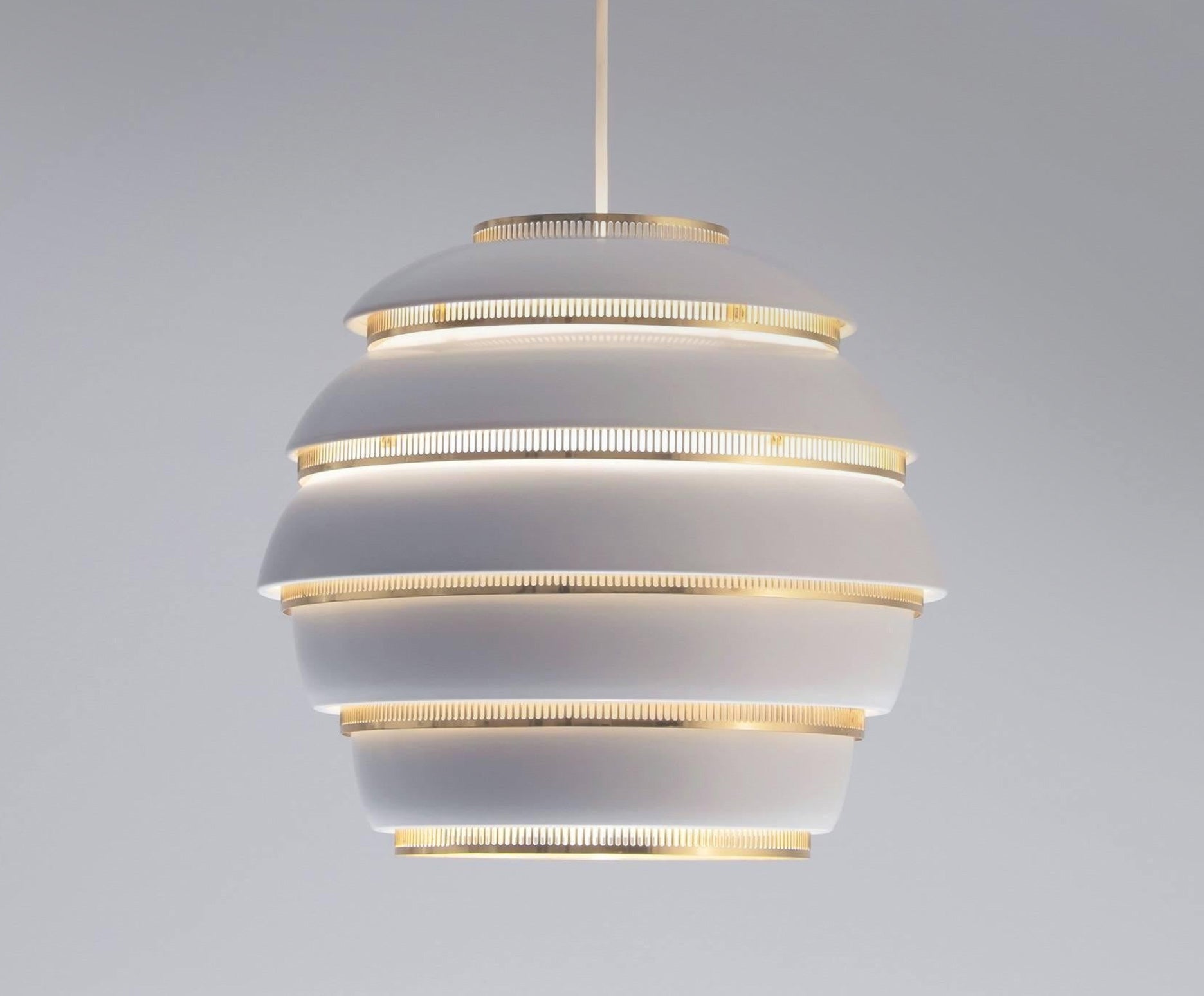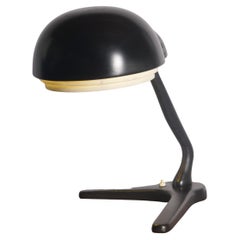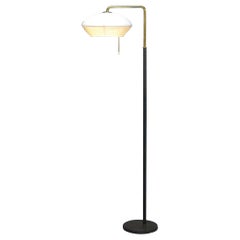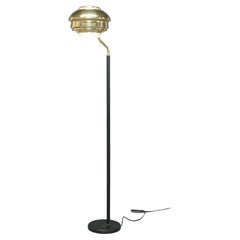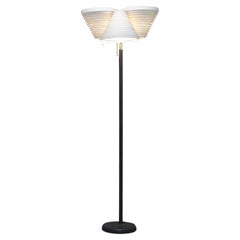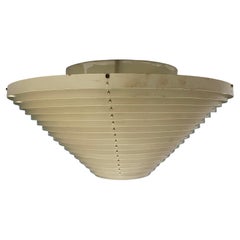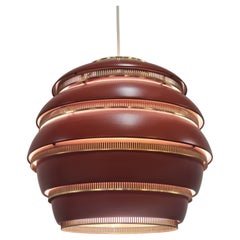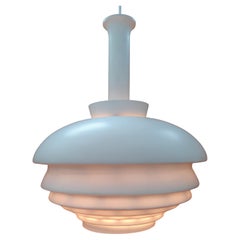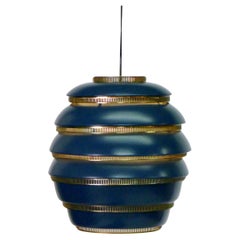
Alvar Aalto, Original Production Large Size Beehive Lamp, Valaistustyo Ky, 1953
View Similar Items
Alvar Aalto, Original Production Large Size Beehive Lamp, Valaistustyo Ky, 1953
About the Item
- Creator:Valaistustyö (Manufacturer),Alvar Aalto (Designer)
- Design:
- Dimensions:Height: 13.78 in (35 cm)Diameter: 13 in (33 cm)
- Power Source:Hardwired
- Lampshade:Included
- Style:Mid-Century Modern (Of the Period)
- Materials and Techniques:
- Place of Origin:
- Period:
- Date of Manufacture:circa 1953
- Condition:Wear consistent with age and use.
- Seller Location:Wargrave, GB
- Reference Number:Seller: Aalto Blue Beehive F8901stDibs: LU839540808322
Beehive Pendant Light
Nicknamed “Beehive” for its resemblance to a bee’s nest, the Pendant Light A331 is among the most famous designs from revered Finnish architect and furniture maker Alvar Aalto (1898–1976).
In 1951, Aalto won a competition to design the main campus of a research university in Jyväskylä, where he had spent much of his childhood. Aalto also operated his studio in the small Finnish town from 1923 to 1933, when he and his first wife, Aino, relocated to Helsinki. In designing eight buildings for the University of Jyväskylä, Aalto planned a campus that echoed the layout of a Greek acropolis — Jyväskylä residents referred to their town as the “Athens of Finland” for its education focus, and the architect took this comparison to heart, prioritizing open-air civic space and other innovations. And just as he and Aino designed the Paimio armchair and all other furnishings for their famed tuberculosis sanatorium project — a masterpiece of functionalism — Aalto also specified furniture and interiors for his structures in Jyväskylä. The Beehive pendant was introduced in 1953 as part of the commission.
The Beehive pendant light’s elegant spherical shape is framed by five bands of handspun aluminum. But it’s the perforated steel rings underneath this multipart “shade” that comprise the unsung hero of the pendant — they provide for a diffusion of light that gives the Beehive a soft glow. The fixture is still manufactured by Artek, the company Alvar and Aino helped cofound in 1935. Within its 13-inch diameter, the Beehive pendant light encompasses many of Alvar Aalto’s most recognizable calling cards: reference to nature, sculptural form, thoughtful mechanics and overall warmth.
Alvar Aalto
An architect and designer, Alvar Aalto deserves an immense share of the credit for bringing Scandinavian modernism and Nordic design to a prominent place in the global arena. In both his buildings and his vintage furniture — which ranges from chairs, stools, tables and lighting to table- and glassware — Aalto’s sensitivity to the natural world and to organic forms and materials tempered the hardness of rationalist design.
Relatively few Aalto buildings exist outside Finland. (Just four exist in the United States, and only one — the sinuous 1945 Baker House dormitory at M.I.T. — is easily visited.) International attention came to Aalto, whose surname translates to English as “wave,” primarily through his furnishings.
Instead of the tubular metal framing favored by the Bauhaus designers and Le Corbusier, Aalto insisted on wood. His aesthetic is best represented by the Paimio armchair, developed with his wife, Aino Aalto, in 1930 as part of the overall design of a Finnish tuberculosis sanatorium.
Comfortable, yet light enough to be easily moved by patients, the Paimio chair’s frame is composed of two laminated birch loops; the seat and back are formed from a single sheet of plywood that scrolls under the headrest and beneath the knees, creating a sort of pillow effect. Aalto’s use of plywood had an enormous influence on Charles and Ray Eames, Arne Jacobsen, Marcel Breuer and others who later came to the material.
Concerned with keeping up standards of quality in the production of his designs, Aalto formed the still-extant company Artek in 1935, along with Aino, whose glass designs were made by the firm. In the latter medium, in 1936 the Aaltos together created the iconic, undulating Savoy vase, so-called for the luxe Helsinki restaurant for which the piece was designed.
Artek also produced Aalto pendants and other lighting designs, many of which — such as the Angel’s Wing floor lamp and the Beehive pendant — incorporate a signature Aalto detail: shades made of concentric enameled-metal rings graduated down in diameter. The effect of the technique is essential Alvar Aalto: at once precise, simple, and somehow poetic.
Find a collection of vintage Alvar Aalto stools, vases, dining tables and other furniture on 1stDibs.
More From This Seller
View AllVintage 1950s Finnish Mid-Century Modern Table Lamps
Metal
Vintage 1950s Finnish Mid-Century Modern Floor Lamps
Metal, Brass
Vintage 1950s Finnish Floor Lamps
Metal, Brass
Vintage 1950s Finnish Mid-Century Modern Floor Lamps
Brass, Steel
Vintage 1950s Finnish Mid-Century Modern Table Lamps
Steel
Vintage 1920s Finnish Scandinavian Modern Dining Room Chairs
Upholstery, Birch
You May Also Like
Vintage 1950s Finnish Organic Modern Chandeliers and Pendants
Aluminum, Brass
Mid-20th Century Finnish Mid-Century Modern Chandeliers and Pendants
Steel
Vintage 1950s Finnish Mid-Century Modern Chandeliers and Pendants
Metal, Brass
Vintage 1950s Finnish Scandinavian Modern Chandeliers and Pendants
Metal
Vintage 1950s Finnish Scandinavian Modern Chandeliers and Pendants
Metal, Brass
Vintage 1950s Finnish Mid-Century Modern Chandeliers and Pendants
Aluminum, Brass
Recently Viewed
View AllRead More
The Very Modern Love Story of Mid-Century Design Duo Alvar and Aino Aalto
A power couple before the term existed, the influential pair made work that still resonates today.
What Makes Scandinavian Modernism and Nordic Design So Irresistible?
Andrew Duncanson, founder of the Stockholm- and London-based gallery Modernity, weighs in on the masters of mid-century furniture and decorative arts.
